Magento 2 Marketplace plugin for Commerce Edition(previously known as Enterprise Edition) will turn your online store into a wonderful multi-vendor marketplace.
This module will allow the sellers to have a separate dashboard. And to sell and manage their products on the Magento store.
Using separate seller panel, the sellers will be able to manage inventory, seller profile page, seller collection page, sales, invoices, shipments, credit memos and many more.
The sellers can add multiple products like Simple, Configurable, Virtual & Downloadable.
The module enables multi-vendor support at your e-commerce store. The Customers can buy the products from various vendors. And can also make reviews and rate the products as per the choice. And, this module is very easy to install as no additional setup is required.
This module supports all the Magento 2 templates and themes and it will be compatible with responsive web designs.
**Note:
- The version 2.0.1 or greater version of the Marketplace Multi-Vendor Marketplace will not work with the Magento 2.0.x version, it will work with Magento 2.1.x. If you have Magento 2.0.x then you can use a lower version of the Marketplace.
- The Marketplace 2.1.x version is compatible with Magento 2.2
- Currently, the module does not support the split-database structure of Magento Commerce(Enterprise Edition & Cloud).
Features
- An attractive design to manage the Products, Sellers, and Commission.
- Separate Seller Profile with Company Logo and Seller Collection Page with Company Banner.
- The admin can allow separate vendor dashboard.
- An interactive vendor dashboard in a separate vendor panel.
- Vendors can access their customer grid, reviews, and activities easily.
- Allowed vendors to make withdrawal request for their remaining amount via separate vendor panel.
- Different Product type for Seller (Simple, Downloadable, Virtual, Configurable).
- Allow admin to create email custom templates.
- Admin can assign products & categories to any particular Seller.
- Using seller dashboard seller can track his income, latest order, comment and reviews, recent orders and recent comments with total sales matrix.
- The buyers can give their reviews.
- This module provides an attractive landing page with top 4 sellers with their top 3 products.
- Admin can choose and customize 3 different layouts for Landing Page.
- Marketplace sell page (in case of layout 2 and layout 3) works as seller central where a seller can separately create his account.
- Allow the seller to edit shop URL for the Profile page, collection page, review page, Location page.
- Option to view the list of all the sellers of the marketplace at one place.
- Allow the seller to select Check boxes for enabling the social media fields on Seller’s Profile page.
- Admin can deny/approve/disapprove seller.
- Admin can view, approve, disapprove, update, deny and delete a seller requested product.
- The buyer can view all the details about the product is given by the seller.
- Option to configure products with available attributes-key features.
- Ajax checks for vendor/seller shop URL.
- Contact the seller with captcha support.
- Separate seller’s product collection.
- Different seller commission for every seller.
- Admin can choose to auto-approve orders or not.
- The seller can manage the order from the front-end when approved by admin.
- Product Preview for product approval at admin.
- Admin can do the Landing page settings.
- Admin can manage the Seller profile page setting.
- The seller will be notified by mail when product inventory reaches to the specified minimum level set by the admin.
- The seller can change their profile page background color.
- Allow seller to add Carrier and Tracking numbers for orders.
- Seller buyer information hide settings.
- Automatically generate seller product URL’s like- Profile, Collection, Location & feedback URL.
- Add Videos along with your product images at the add new product page in the Marketplace.
- Added Product Assignment tab to render product grid to mass assign products to the seller in seller edit page in admin panel.
- Make SKU configurable Static/Dynamic for seller’s products so that admin can set accordingly.
- Configuration setting for SKU prefix that the admin can configure for seller’s products.
- Updated Seller Dashboard design.
- Display sales report by using charts, sale by location, sales stats and filter the reports by year, month, week and day in seller dashboard.
- Added Top Selling Category pie chart in seller dashboard.
- Admin can allow the seller to add related products, up-sell products and cross-sell products from seller’s panel.
- Admin can allow the seller to add product limit for the customer on product purchase.
- The admin can view notification count for new seller request, add/edit seller product, and feedback review.
- The sellers can view notification count for product approval, new orders, and new transactions.
- Allow vendor to provide information store wise.
Installation
Customers will get a zip folder and they have to extract the contents of this zip folder on their system. The extracted folder has an src folder, inside the src folder you have the app folder. You need to transfer this app folder into the Magento2 root directory on the server as shown below.
After the successful installation, you have to run the command on Magento2 root directory-“php bin/magento setup:upgrade”

Now, run this command in the Magento 2 Root -“php bin/magento setup:di:compile” as shown below in the snapshot.
Also, run this command into the Magento2 Root- “php bin/magento setup:static-content:deploy” You can refer the below screenshot.
After running the commands, you have to flush the cache from Magento admin panel by navigating through->System->Cache management as shown below.
Multi-lingual Support
translation
If user want to translate their module from English to German then they need to follow the path app/code/Webkul/Marketplace/i18n in their unzipped Magento Marketplace folder and will get a csv file with name “en_US.csv”. Now they will rename that csv as “de_DE.csv” and translate all right side content after comma in German language. After editing the CSV, save it and then upload it to the path app/code/Webkul/Marketplace/i18n where they have installed Magento2 on the server. The module will get translated in German Language. It supports both the LTR and RTL languages.
The user can edit the CSV like the image below.
Arabic Translation
Step1:
If a user wants to translate their module from English into the Arabic language, they need to follow the path app/code/Webkul/Marketplace/i18n in their unzipped Magento Marketplace folder. Here the user will get a CSV file with name “en_US.csv” as shown below in the snapshot.
Step2:
Now just rename this en_US.csv to “ar_SA.csv” as shown below in the snapshot.

Step3:
Now, right click on this renamed CSV file and click the edit button to translate all right side content of this CSV after the comma into the Arabic language.
The actual CSV file after opening it up:
The users can edit the CSV as per the below screenshot:
Step4:
Now after translating the content of the CSV save it and then upload it to the path app/code/Webkul/Marketplace/i18n where you have installed the Magento2 on the server. Now, the module will get translated into the Arabic Language.

Multi-Seller Marketplace Configuration
After the module installation, the admin will be able to configure the module settings. For this, the admin will navigate to Stores > Configuration > Marketplace > General Settings as per the below image.
Here, the admin will:
- Admin Email-ID – enter the email address.
- Global Commission Rate – enter a global commission rate, this commission mechanism will be applicable to all the sellers. Let us say as an example there is a seller S1 and his/her product(P1) price is 100 USD so on the sale of product P1 seller will get 80 USD and admin will get 20 USD as commission.
- Allow Seller to Manage Orders – By enabling “YES”, admin allows the sellers to manage the orders from front-end. Now the seller can generate invoices for their ordered products, generate a tracking number and shipment for the orders of their products. Even the seller can notify the customers by sending them emails, cancel/refund the order and even print the order.
- Move Product Tax to Seller Account – If move product tax to seller account is disabled or set as no then product Tax amount will forward into Admin account otherwise, it will go into Seller account.
- Seller Approval Required – Partner or seller approval is the same as product approval, during sign up of the seller if admin allows this option then the user who will sign up in the store as a seller will convert into seller automatically. The store owner can set YES or NO.
- Set Captcha Enable – If this is set “Yes” then if any user contacts the seller then on the Contact Form, the additional question appears for the security purpose and if the option is set as “No” then the customer can contact the sellers without any additional security question.
The admin can allow the vendors to have a separate dashboard in the Magento 2 marketplace multi-vendor module. The admin if selects this option as “Yes”, as a vendor is also a customer, the vendors will be able to have a separate dashboard that will not have the account section for the customer but only the vendor dashboard.
To configure this option the admin will navigate to Stores->Configuration->Webkul->Marketplace->Seller Dashboard Layout Setting. Here, the admin will select the option “Allow Seller Separate dashboard” and set it to “Yes”.
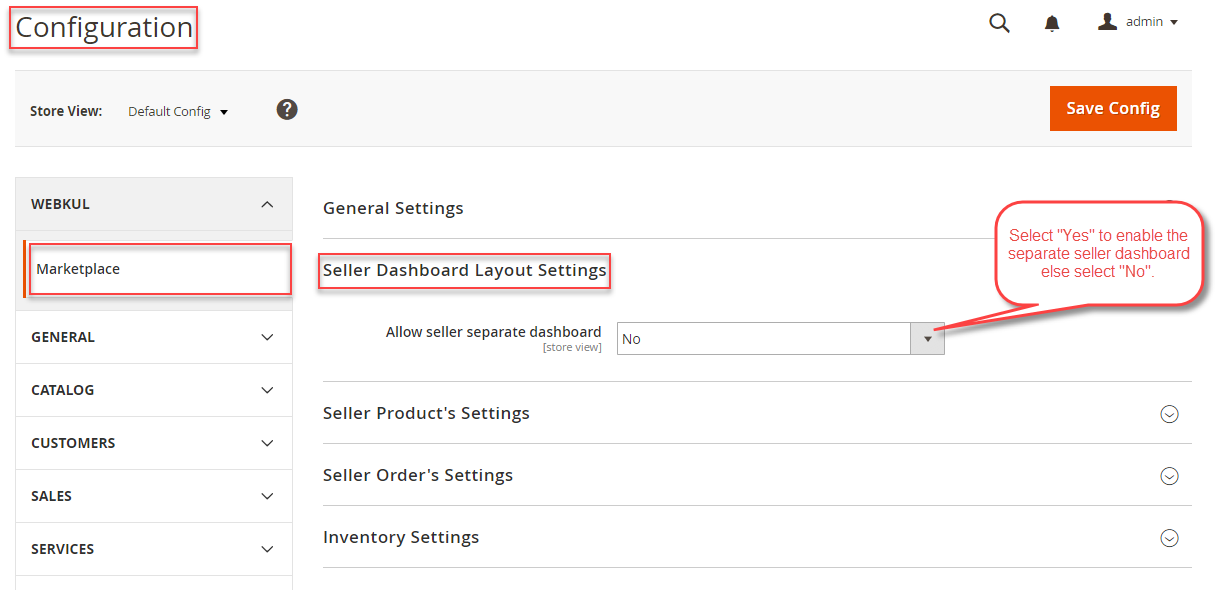
Below find the comparison wherein we will show you the changes that take effect after the admin has set this setting “Allow seller separate dashboard” as “Yes“.
When the option is set to “No” which is the default one, the vendor’s dashboard is visible as shown below in the snapshot.
 The vendor dashboard has the vendor account panel and the customer account panel both visible to the vendor on the left-hand side.
The vendor dashboard has the vendor account panel and the customer account panel both visible to the vendor on the left-hand side.
Now, if the admin has set the setting “Allow seller separate dashboard” as “Yes“, the vendor can log in to his account by clicking on the “Vendor Login” link placed in the footer.
Clicking the Vendor Login link, the seller will be able to see the new login section and can enter his credentials to log in to his account panel.

After login, the vendor dashboard will appear as shown in the below snapshot.
Let’s go through the various options that are available on the above page.
Vendor Account Drop-Down
Clicking on the vendor account drop-down option will show the account related options which include –
- Account Settings
- Buyer Dashboard
- Logout
Account Settings
Clicking the account settings menu option will redirect the vendor to the marketplace edit seller profile page.
Here, the vendor can edit his profile information and can view his collection and profile pages by clicking the buttons provided for the same. The vendor can manage his payment information on this page as well and much more.
Buyer Dashboard
Clicking the Buyer Dashboard menu option, the vendor will switch to his buyer account panel page.
Here, the vendor can see his buyer account panel and the various other options related to it.
Logout
Clicking on the Logout button will log out the vendor from his account panel and will redirect the vendor to the store home page.
Notifications
Clicking the notification icon will show the recent notifications for the Orders(Place Order by customer/after the admin approves an order), Products(add/approve by the admin), Transactions(when the admin makes a payout to the seller), and Feedback(After the approval of seller feedback by the admin).
 Clicking the “View All” option on the notification panel will redirect you to the grid view of the notifications.
Clicking the “View All” option on the notification panel will redirect you to the grid view of the notifications.
Home Icon
Clicking the home icon will redirect the vendor to the home page as shown below in the snapshot.
Vendor Side Panel Account – Options
Dashboard
After clicking on the dashboard, the vendor will be able to see the complete statistics for his store account. The vendor can see the –
- Number of orders pending
- Number of orders in process
- Number of complete orders
The vendor can also see the total number of orders that have been placed by the customers, the total number products available, and the total number of logged in customers, the lifetime sales and the total payout that has been made by the admin to the vendor. The seller can also find the details of the latest orders that have been placed along with the latest comments and reviews by the customers.
Orders
Clicking the Orders menu option will bring up the section to view all the orders that have been placed for this vendor’s products. Here, the UI components have been used to display the grid that uses ajax to display the grid data.
Clicking the “Order” link under the column View will allow the seller to view the complete order details. The seller can then accordingly generate the shipments, create credit memo, send emails to customers and the print the order details.
**Note – Orders section will only be available with the option that allows the vendor to have a separate dashboard. In the default system, this option will not be available.
Products
Taping the Add Products menu option brings up the section to add the products. from here the seller can easily add in his products.
Under the My product List, the seller will find all of his products. Here, the UI components have been used to display the grid that uses ajax to display the grid data.
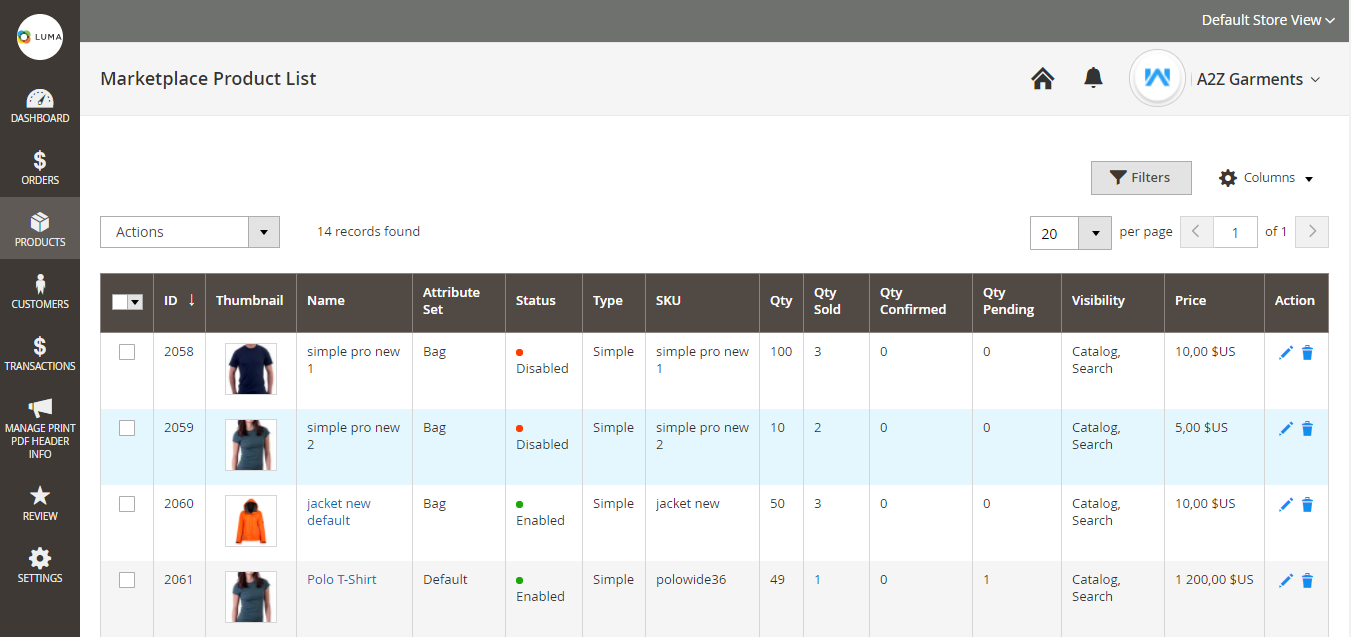 Lastly, under the Configurable Attribute menu option, the seller will be able to create the attribute for Configurable Products including Attribute Code, Attribute Label, Catalog Input Type, and Values Required.
Lastly, under the Configurable Attribute menu option, the seller will be able to create the attribute for Configurable Products including Attribute Code, Attribute Label, Catalog Input Type, and Values Required.
Customers
Under this section, the seller will be able to view all of his customers and can see the order placed by the customers as well. Here, the UI components have been used to display the grid that uses ajax to display the grid.
Transactions
Under the transactions, the sellers can check their statement(their total earnings) and can make a request for the Withdrawal(for their remaining payout). The sellers can request for their remaining payout under this section. Clicking the “Make a Withdrawal” button will send an email to the admin that the seller wants to make a withdrawal.
Clicking the View link the vendor will be able to see the transaction details as shown below in the snapshot.
Manage Print PDF Header Info.
Under this menu option, the seller can add their Invoice and Packing slip Address/Vat/Tax information and this will be visible in the header of the pdf files.
Review
Under this section, the seller can find all the review and ratings given by the customers. The vendor can check the price, value, quality ratings along with the feed summary, review, and the customer name with the status of the review as well. Here, the UI components have been used to display the grid that uses ajax to display the grid.
**Note – Ratings will be only available with the option that allows the vendor to have a separate dashboard. In the default system, this option will not be available.
Settings
Clicking the settings menu option will redirect the vendor to the marketplace edit seller profile page. Here, the vendor can edit his profile information and can view his collection and profile pages by clicking the buttons provided for the same. The vendor can manage his payment information on this page as well and much more.
Here, the admin will:
-
- Attribute Set ID – Attribute Set ID is the default ID for your global catalog. Admin can select multiple attributes set from the Multi-Select list.
- Product Approval Required – Product Approval Required by this options admin can restrict automatic approval of the product e.g If seller adds a product, every time product will be moderated by admin, the store owner can set YES or NO.
- Product Update Approval Required – By this option, admin can restrict automatic approval when a seller tries to update any parameter of the product e.g If seller edits a product, every time product will be moderated by admin, the store owner can set YES or NO.
- Allow Category Tree View like admin product Category Tree – If this option is selected as “Yes“, then the seller on his add/edit product page will find the category tree view for selecting the category for the products as is displayed similar to the admin’s category tree view.
- Allowed Categories for seller to add products – Using this field admin can restrict seller to use only some selected categories to add products. Those categories which are not selected by admin will not appear.
- Product Type For Seller – Here admin will select different product types and these selected product types can be added by the seller from the front-end.
- Allow seller to add products with SKU type – Admin can allow the sellers to add the products with two types of SKU’s – Static and Dynamic. In the static type of SKU, Seller set SKU will be used. In the dynamic type of SKU, automatically created SKU will be used.
- Product SKU Prefix – Value put by the admin in this field will be added at initial to the SKU that will be set by the seller. Also, this field only applies to the seller products. For example – If SKU prefix = “xyz” & product SKU is “T-Shirt” then, the product SKU becomes => “xyz”T-Shirt
- Allow Seller to Add Related Products – Admin can allow sellers to add ‘Related Products’ while creating or editing products from the seller’s panel.
- Allow Seller to Add Up-Sell Products – Admin can allow sellers to add ‘Up-Sell Products’ while creating or editing products from the seller’s panel.
- Allow Seller to Add Cross-Sell Products – Admin can allow sellers to add ‘Cross-Sell Products’ while creating or editing products from the seller’s panel.
- Allow Seller to Add Limit on Product Purchase for Customer – Admin can allow the seller to set product purchase quantity limit for buyers.
- Allowed Product Qty on Product Purchase for Customer – Here admin can enter the default value that will use when the seller has not set any product purchase limit.
For example, if the admin has set default 5 product purchase quantity and the seller has not set any limit then the customer can only buy 5 product quantity. If the seller has set some product quantity limit then that limit will be used.
Order Approval Required
When set as “Yes”, the admin has to approve each order manually and only after that the seller will get notified about the order. if this is set to “No”, the order notification will automatically be sent to the seller.
When the admin approves an order, the seller will receive and notification email and then the seller will be able to manage and view the order from the seller’s panel.
If “Enable Low Notification” is selected as “Yes”, then seller get notified through their e-mails when their inventory decreases with subsequent orders. As soon as the inventory reaches to the specified minimum level set by the admin, a low stock notification email will be sent to the seller, if enabled from the admin panel.
Low Stock Quantity
Here admin will enter low stock quantity, which will allow sending low stock notification mail to sellers when product quantity will be equal or less than this quantity.
Display Seller Profile
If admin sets this option as “Yes”, then the seller info. will be visible under the Marketplace Dashboard menu, on the product and the landing page. If this option is set to “No”, then the seller info. will be hidden from the Marketplace Dashboard, product, and the Marketplace landing page.

If the admin has selected “No”, then the seller will not be able to see the customer details and customers info. will be hidden and not visible on the Order View page, Invoice, Credit Memo page. Buyer details will also be hidden from the shipment slip and the PDF of Invoice and Credit Memo.
Enable Color Picker
If this option is set to “Yes”, then the seller can change their profile page background color as per their need.
Seller Policies Enable at frontend
There is an option – ” Seller policies Enable at frontend ” if the admin sets it as “Yes”, then the seller shipping and return policies will be visible on the frontend. If the admin has set it as “No”, then the shipping and other policies will not be visible on the frontend.
Rewrite Seller’s Shop URL
When this option is set “Yes”, then the seller can change the URL to any name they want and then that new name will appear. The seller can change the Url of the Profile page, Review page, Collection page & Location page.
Allow to automatic create seller public URL on Seller registration
if the admin has selected “Yes” for this field then when a new customer creates a new account it automatically creates the seller public URL at the time of registration. If the admin has set this option as “No“, then the seller will have to manually add his rewrite URLs.
When Marketplace Seller Review is set to “YES”, then the customer can make a review only after the purchase and if “NO” is selected then the customer can make a review before the product purchase.
From here admin can enable or disable the Seller registration from Customer Registration Page. Admin can also choose from the 3 layouts visible and customize them as per their need.
Display Seller Registration Block on Customer Registration Page
From here admin can enable or disable the seller registration from the customer registration page.
When selected ‘No’
When set to No, and if Layout 2 or 3 is selected then it will work as a Seller Central. For detailed information about this, you check the Magento2 Marketplace Seller Central Blog at http://webkul.com/blog/magento2-marketplace-seller-central/.
When selected ‘Yes’
Case 1: When Layout1 is selected
Admin Panel
Marketplace Landing Page Layout
Here admin can choose from various layouts that will be shown on the front-end.
Marketplace Landing Page Head Title
Here admin will enter the Head title of the Marketplace landing page and that name will appear on the front-end.
Display Banner, Banner Image & Banner Content
Here admin will enable the option “Display Banner” so that the banner will be displayed on the front-end. In “Banner Image” section, the admin will choose and upload the banner image. For the “Banner Content”, the admin will write the content which will be displayed on the banner image in the Marketplace.
MarketPlace Landing Page Label 1
Here admin will enter some catchy lines and it will be displayed above all feature’s icons.
Marketplace Landing Page Label 2
Here admin will enter some content which will be displayed on top 4 seller blocks.
Marketplace Landing Page Label 3
Here, Admin will enter the content for displaying above “View All Seller” button.
Marketplace Landing Page Label 4
Here admin will enter the content for displaying above marketplace content.
Marketplace Landing Page Button Label
Here admin will enter the label of the landing page button label and it will get displayed on banners.
Display Icons-
Admin can set this as “Yes or No” and then anyone can see Feature icon and Feature label. Likewise, the admin will select for all the Feature icons 1,2,3,4 and Feature Label and it will be displayed as per the admin setting.
Admin will explain the overall workflow of the Marketplace through the four icons as shown in the image below. Any Seller can register themselves in the Marketplace, then add products to their shops. After adding the products to their shops, selling will be done and then revenue will be generated for the sale.
About Marketplace
Here admin will enter the content inside the box provided.
Marketplace Seller List Page Bottom Label
Here admin will enter the label which will be displayed at the bottom of the MarketPlace Seller List Page.
Marketplace Seller List Page Top Label
Here admin will enter the label which will be displayed at the top of the MarketPlace Seller List Page.
Front-end
Case 2: When Layout2 is selected
Admin Panel
Marketplace Landing Page Layout
Here admin can choose from various layouts that will be shown on the front-end.
Marketplace Landing Page Head Title
Here admin will enter the Head title of the Marketplace landing page and that name will appear on the front-end.
Display Banner, Banner Image & Banner Content
Here admin will enable the option “Display Banner” so that the banner will be displayed on the front-end. In “Banner Image” section, the admin will choose and upload the banner image. For the “Banner Content”, the admin will write the content which will be displayed on the banner image in the Marketplace.
Marketplace Landing Page Button Label
Here admin will enter the label of the landing page button label and it will get displayed on banners.
Terms and Conditions URL
Here admin has to enter the Terms & Conditions Page link address.
Front-end
Case 3: When Layout3 is selected
Admin Panel
Marketplace Landing Page Layout
Here admin can choose from various layouts that will be shown on the front-end.
Marketplace Landing Page Head Title
Here admin will enter the Head title of the Marketplace landing page and that name will appear on the front-end.
Display Banner, Banner Image & Banner Content
Here admin will enable the option “Display Banner” so that the banner will be displayed on the front-end. In “Banner Image” section, the admin will choose and upload the banner image. For the “Banner Content”, the admin will write the content which will be displayed on the banner image in the Marketplace.
Marketplace Landing Page Button Label
Here admin will enter the label of the landing page button label and it will get displayed on banners.
MarketPlace Landing Page Label 1
Here admin will enter some catchy lines and it will be displayed above all feature’s icons.
Marketplace Landing Page Label 2
Here admin will enter some content which will be displayed on top 4 seller blocks.
Marketplace Landing Page Label 3
Here, Admin will enter the content for displaying above “View All Seller” button.
Display Icons-
Admin can set this as “Yes or No” and then anyone can see Feature icon and Feature label. Likewise, the admin will select for all the Feature icons 1,2,3,4,5 and Feature Label and it will be displayed as per the admin setting.
Admin will explain the overall workflow of the Marketplace through the five icons. Any Seller can register themselves in the Marketplace, they can customize their profile and add details, then add products for their shops. After adding the products to their shops, selling will be done and they will generate profit from sales.
Terms and Conditions URL
Here admin has to enter the Terms & Conditions Page link address.
Front-end
Using this field, admin can Enable or Disable the product page fields hints which will assist the seller while adding product.
Using this field, admin can Enable or Disable the profile hints including shop URL, profile id, Profile Payment Information, Profile Meta Description, Profile Meta Keywords, Shipping & Return Policies and many more.
Now admin can select the custom templates from Marketing > Communications (Email Template). Created custom templates will be added to the drop down and admin can use the desired template.
Admin can select the created template like this-
Marketplace Landing Page
The module is based on a responsive theme which makes the marketplace landing page more beautiful than before, incorporating an alluring banner with its content. The page is divided into 4 different labels, between the Banner Image and Footer links, showing icons like Registering Yourself, Adding products, Start Selling and for Generating Revenues.
The second label will display the top 4 sellers of the marketplace, with their top three selling products, Seller logo, Shop Title, and a button to redirect to view the full collection of the seller. The label also contains the option to ‘view the list of all the sellers’ of the marketplace at one place.
You can see there are four icons which display the overall working of the Marketplace in a gist. Any Seller can register themselves in the Marketplace, then add products for their shops. After adding the products to their shops, selling will be done and then revenue will be generated for the sale.
After clicking on View All, you will be redirected to a new page, where the customer can search seller by a shop and all the seller’s information will be there along with the seller’s logo. There will be a “View All” button which will display all the products of the seller.
Marketplace Vendor Sign-up
Seller signup is very easy, the user can signup for the seller using marketplace landing page button or from store My Account link and during signup, they need to choose “Want To Become Partner”. If they want to signup as a seller then they need to choose YES else NO. If they choose YES then they need to put their shop URL which will be unique as per the screenshot.
The shop URL input field is Ajax driven by which seller can see that particular URL exist or not as below screens. As per the screen, that URL does exist.
As per the below screen, that URL does not exist.
Marketplace Seller Panel Management
If the user has been approved as a seller then the marketplace block will display in the Account section of the user as per the image. From here Seller can edit their profile, add new products, delete their products, view their transaction list and order history. The seller can also view the notification count for product approval, new order placed, and new transaction.
The sellers can even click the notification bell icon to quickly view the new notifications for products, transactions, and orders. Please refer from the screenshot below:
You can see there are many other tabs for base marketplace module to manage seller profile and to add a product to the store. Let us explain all of them.
Edit Seller Profile Information-
Using this menu seller will have shop information like shop name, location about their shop, banner image, shop logo, company locality, shop meta description and many more parameters, as per the below image screenshot. In the Seller profile panel, the seller can add their various social media links, contact number, Background color (if enabled by the admin), Shop title, Company Banner, Company Logo, Tax/Vat number, Payment details, Policy details, etc.
Edit Seller Shop URL-
One can now edit the different Shop page’s URL as required for Profile Page, Collection Page, Review page & Location Page, then he can set accordingly as shown in the screenshot, which will be displayed in the URL of the particular page requested. The seller can manage the custom URL for the shop.
Edit Seller Payment Information-
Under the Payment Details, the seller can add their bank account or PayPal id or any kind of payment information.
front end view of seller’s profile
After entering all the information, sellers will get an amazing page for their shop as below.
Seller’s Profile Page
Seller’s Collection Page
When user will click on “Products” or “View All Products”, the user will be able to see all the Seller’s Product and can be searched using layered navigation. From here buyer can add a product to his cart and proceed to further process.
Seller’s Product Page
In the product page, the customer can view the review for that particular product along with the shop link for that seller as shown in the below image.

Contact Seller
When the buyer clicks on “Contact” tab at seller’s profile page or “Contact Us” button at Seller’s product page then the popup for contact seller will open.
Seller’s Feedback Page
Buyer can rate the seller according to his/ her opinion under their profile with star rate vote and feedback message as shown below.
Seller’s Location Page
By clicking on seller location below Seller’s shop name the buyer will be redirected to the seller’s location page. From the seller’s location page buyer can view seller’s location on the map.
New Products
Well, the admin can set the functionality for not showing the select drop-down for selecting the attribute set and product type for adding products at the seller end as per the below cases-
Case 1 :
If the admin has set only one “Attribute set” and one “Product type” then – in this case, the seller will be directly taken to the “add product page” without being prompted to select the Attribute Set and the Product Type for the new product. This will cut the selection of these two options for the sellers where the admin has set only one Attribute set and only one Product type for the sellers.
Case 2 :
If the admin has set more than one “Attribute Set” and “Product Type” then – in this case, the seller will have to first set the Attribute set and the Product type for the new product and then the seller will be taken to the Add New Product form page.
Case 3 :
If the admin has set only one “Attribute Set” and more than one “Product type” then – in this case, the seller will first have to set the Product Type for the new product and then the seller will be taken to the Add New Product form page.
Case 4 :
If the admin has set more than one “Attribute Set” and only one “Product type” then – in this case, the seller will first have to set the Attribute Set for the new product and then the seller will be taken to the Add New Product form page as per the below screenshot.
The seller can add products from the seller end. Let us explain all the Product types one by one below.
After inserting Attribute Set and Product type, below page will be open, in which you have to enter whole information about the product and save it. It’s all about for adding a new product.
Note- The seller cannot upload the image from the WYSIWYG editor provided in the Description text box in the Add Product page.
The seller can make any image as the base image by clicking on that particular product image. Please refer the image below.
Front-end (Product Page)
The sellers can also add videos along with the products images. The admin needs to enter his YouTube account API Keys in the admin backend panel by navigating to Stores->Configuration-> Catalog->Product Video. Here, the admin will enter his account(YouTube) API key and then save the configuration.
Now the sellers will be able to see the “Add Video” button on their add product page as shown below in the snapshot.

Clicking the “Add Video” button will bring up a section to add the video details. Here, the seller needs to fill in the required fields and save the configuration to add the video.
The seller can add Downloadable Product in Magento2 Marketplace multi-vendor module. Software, e-books, images, music or video, any type of content that can be packaged into files and downloaded can be sold using this product type.
Adding up a downloadable product will create an additional field to enter the URL, as mentioned in the screenshot.
The seller can add Virtual Product which does not have a physical presence.
Before creating a configurable product, Seller needs to create the attribute for Configurable Products including Attribute Code, Attribute Label, Catalog Input Type, and Values Required.
The seller can add Configurable product as shown below. You must create an attribute for Configurable products.

After entering all the details about the product, the seller will click on “Create Configuration” and then following pages will appear for the attributes code selection.

Select Attributes– Now, the seller will select attributes value and then click on next button.
Attributes Values– The seller will select attribute values from the check-box as per the image below.
 Now, the seller will select options for bulk images, pricing, and quantity.
Now, the seller will select options for bulk images, pricing, and quantity.
Upload bulk images- Here, the seller can select an option like “Apply unique images by attribute to each SKU” and then select an attribute from the drop-down and upload image(s) for each attribute values.
Bulk price and quantity- In the Pricing and Quantity, the seller will select the attribute from the drop-down and then enter different quantities for each attribute values.


Now, the seller can review the product and then click on “Generate Products”.

After successful addition of the product, the seller can see it on the product add the page and then save that product.

Duplicate Product
A vendor can also create a duplicate copy of a product. A duplicate product can be created either at the time of editing or adding a new product. To create a duplicate copy of an existing product, edit product and click Save & Duplicate button.
Once the duplicate product is created all the product information will be copied from the original product except the following:
My Product List
Using this menu seller can manage their product like they can edit their product, delete their product, track their product sales and can check their ordered stock quantity as per the screenshot. There is a mass delete option by which we can delete whole product at a time.
The seller can use Filter property in which products can be filtered according to Product Name, Status & Date. You can see this as below screenshot.
 Quantity Confirmed– Quantity Confirmed denotes that the order has been completed.
Quantity Confirmed– Quantity Confirmed denotes that the order has been completed.
Quantity Pending– Quantity Pending status shows that order is not completed yet.
Quantity Sold– Quantity sold denotes that buyer has placed orders whether it is confirmed or not.
My Transaction List
My Order History
Using this field seller can see their products order history in one shop. Order histories can filter by Order Id, Date, and Status.
After clicking the “Download All Invoice Slip & Download All Shipping Slip”, a popup will appear where the seller can download the invoice and packing slips by entering “From” and “Until” date.
After clicking on View Order, Order Details will display with Buyer information, Shipping address, Shipping method, Billing address, Payment method, Items ordered as shown below along with that, a seller can manage shipment, add tracking number, the creation of credit memo, sending emails, printing of invoices etc. Just by viewing order in ‘My order history’.
The seller can also refund the amount to his/her customers from the Marketplace module. After creating the invoice, the seller will click on “Credit Memo” like the image below.
The seller can update the quantity for the refund and can also add the adjustment fees. You can check the below image for the better understanding.
Manage Print PDF Header Info
Marketplace Dashboard
Using seller dashboard seller can track his income, 5 top selling products, lifetime sales, total payout, and the remaining amount that is left to be paid out. Also, the seller can track his sales by location and can filter the results using year, month, week and day using an interactive map. Seller will be able to see his top-selling category in the form of a pie chart. Similarly, the seller can see his sales statistics as a bar graph and can filter the results using year, month, week and day.
If Seller has any doubts or query then, they can frequently ask the questions or doubts to the admin. This is a way of communication between Seller and Admin for Seller’s query.
Seller Order Notification Mail Template
In this module, if an order is placed and its invoice has been created then the seller will receive product sold notification mail with their product details. For an example, if an order is placed with three products (A, B,C) of Seller (x,y,z) respectively. So when order invoice will be created then sellers (X,Y,Z) will receive an email for their products (A,B,C respectively) with order details.
Magento2 Marketplace Admin Management
After the successful setup of the marketplace module admin will be able to see “Marketplace Management” as per the below screen. The admin can also view the notification count for new seller request, add or edit seller product and new feedback.
The admin can even click the notification bell icon to quickly view the notifications for products, sellers, and feedbacks. Please refer from the screenshot below:
This menu is responsible for managing Seller’s Product from Marketplace configuration panel (Store > Settings > Configuration) product approval is required then, in this case, every product added by seller needs to be approved by admin. Product approval will happen from Manage Product menu as per the screenshot. There is also a Deny option by which admin can deny the Seller’s product for a valid reason.
The admin can also view the seller products before approval on the front-end by clicking the View button.
On clicking on the Product image, admin can see enlarged image for the better view and at the bottom, there is a link to view product detail.
The admin can deny any approved product by clicking on the Deny button.
This menu is responsible for Seller Management from marketplace configuration panel (Store > Settings > Configuration). If partner approval is required then, in this case, every seller needs to be approved by admin as per the image.
View Seller’s Order-
When the admin will click on “Order” then all the orders of that seller will be displayed. Admin can also see amount left to be paid to the seller.
The admin can select more than one order id and then pay to the seller for the selected order ids.
The admin can deny any seller by clicking on the Deny Button and entering the reason.To clear out the message admin can click the reset button.
View/Edit Seller’s Information-
Click the Marketplace Manage seller menu and select the seller to open the below page with the seller information. Here, admin can edit any detail and then save it.
Admin can see Payment details entered by a Seller during account creation. This payment details will be used by admin to pay the sellers.
The admin can set the commission in percentage for any particular seller. The admin can also see Total Sale, Total Seller Sale, total Admin Sale.
The admin can assign categories to a seller by going to Assign Category option as visible in the screenshot below. The seller can now add products and select only the assigned categories.
When the admin needs to assign any product or mass assign products to any particular seller, the admin will click the menu item “Product Assignment”. Here the admin will find a complete list of products in the catalog. Admin will check the Ids of the products that are to be assigned to the seller and will click the save customer button after that to assign the products to the seller.
Using this field admin can remove any seller from the Marketplace and make him a normal customer.
Here, admin can view details like Seller ID, Commission percentage, Total Sales, Received Amount, Remaining Amount, Commission value and Last paid.
Here, admin can view the transaction detail which comes after the admin pays the seller.
This menu is responsible for all the reviews. Admin can approve, unapproved, and delete the reviews. Unapproved or deleted reviews will not appear in Seller’s account. Admin can also see the ratings for price, value, and quality in terms of the star.
Pages Affected When Admin Has Set – ” Show Seller Profile” To “No”
When the admin will set the seller profile page setting for “Show Seller Profile” to “No” at the back end under Stores>Configuration>Marketplace >Seller profile Page Settings as shown below, many pages will be affected by this setting.

This setting will bring change to hide the “Seller Profile” menu item from the seller navigation menu as shown below.
Seller information will be hidden from the marketplace landing page as shown below.
On the product page, the seller information which is visible to the customers will be hidden as shown below in the screenshot.

On My Order History page, the buyer information will be hidden from the seller as shown below.

The buyer information is also hidden at the View Order Details page as shown below in the screenshot.
You can see the buyer details are hidden for the Shipment Tab as shown below in the screenshot.
The Packaging Slip downloaded as pdf will not have any buyer details on it as shown below in the screenshot.
Invoice –
The buyer information will be hidden on the View Invoice Details page of the seller as shown below.
The buyer information is also hidden from the downloaded pdf of the Invoice as per the below screenshot.
Credit Memo –
Buyer information will be hidden at the Credit Memo Generation page as shown below.
On View Credit Memo details page, the buyer information will be hidden as per the below screenshot.
Buyer information is hidden from the downloaded Credit Memo pdf as shown below –

That’s all for Magento 2 Marketplace Multi-Vendor module for Commerce Edition. Still, have any issue feel free to add a ticket and let us know your views to make the module better http://webkul.uvdesk.com/
Current Product Version - 2.1.7
Supported Framework Version - Magento 2.0.x, 2.1.x, 2.2.x,2.3.x, 2.4.x













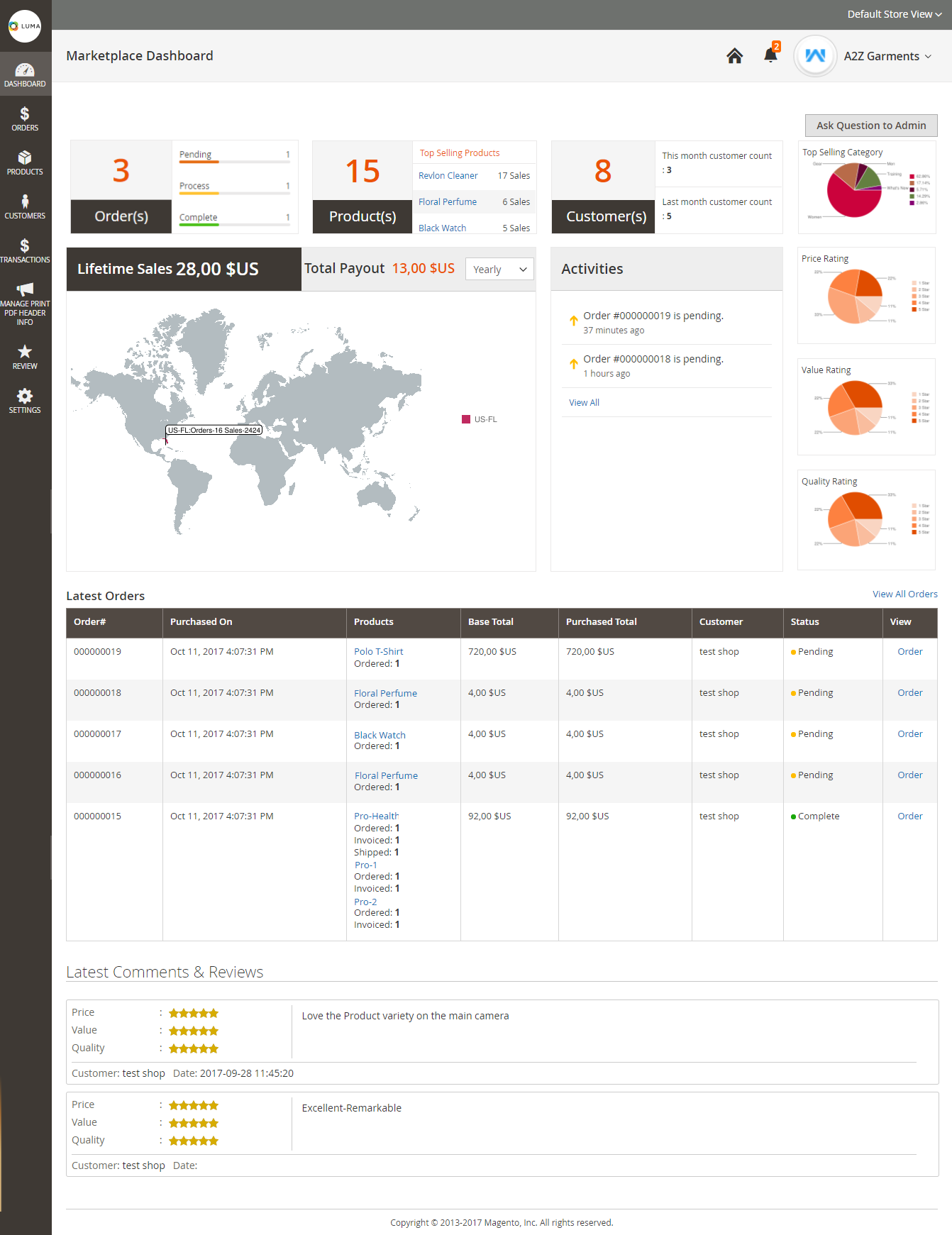



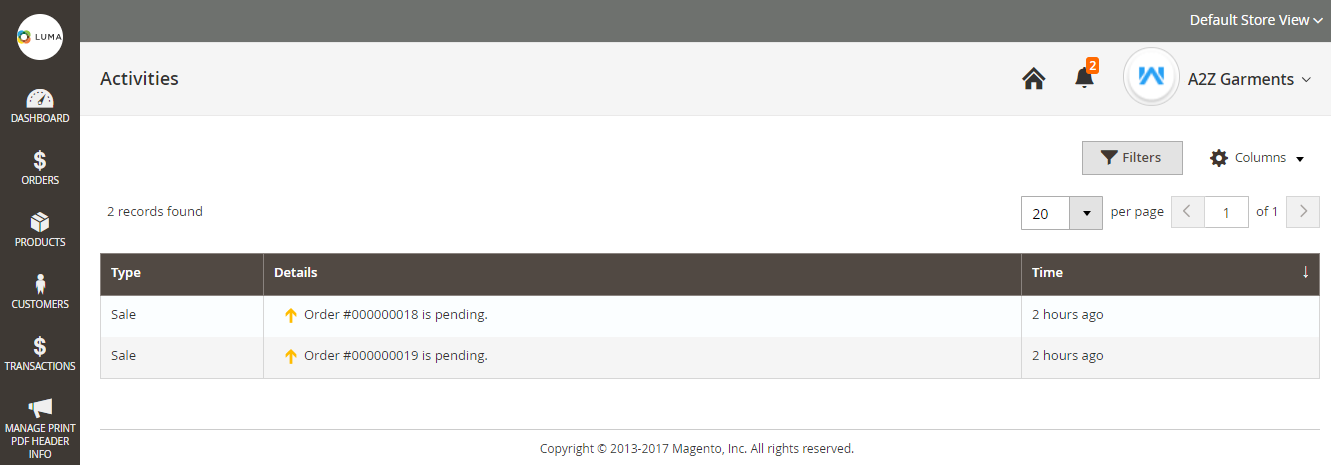

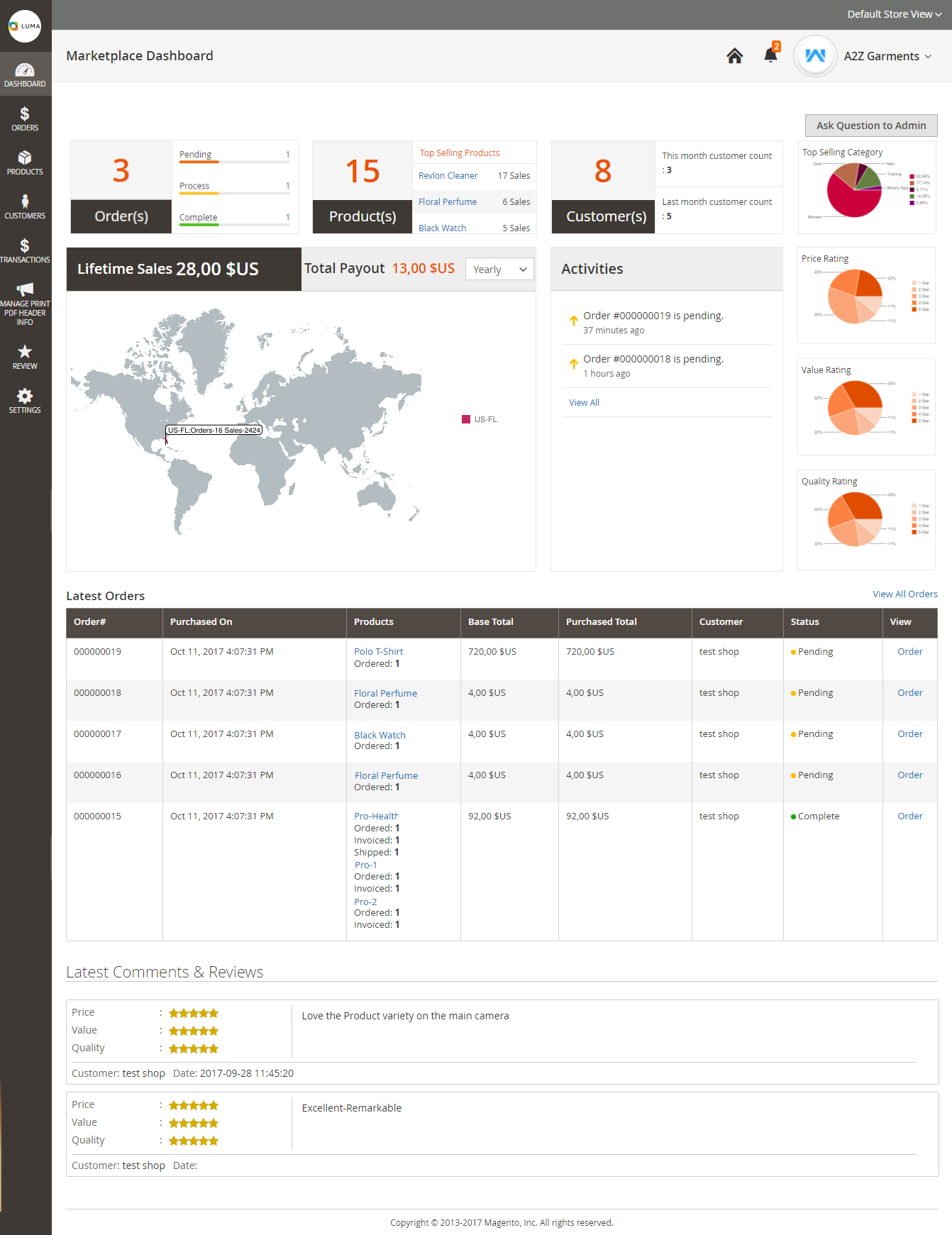











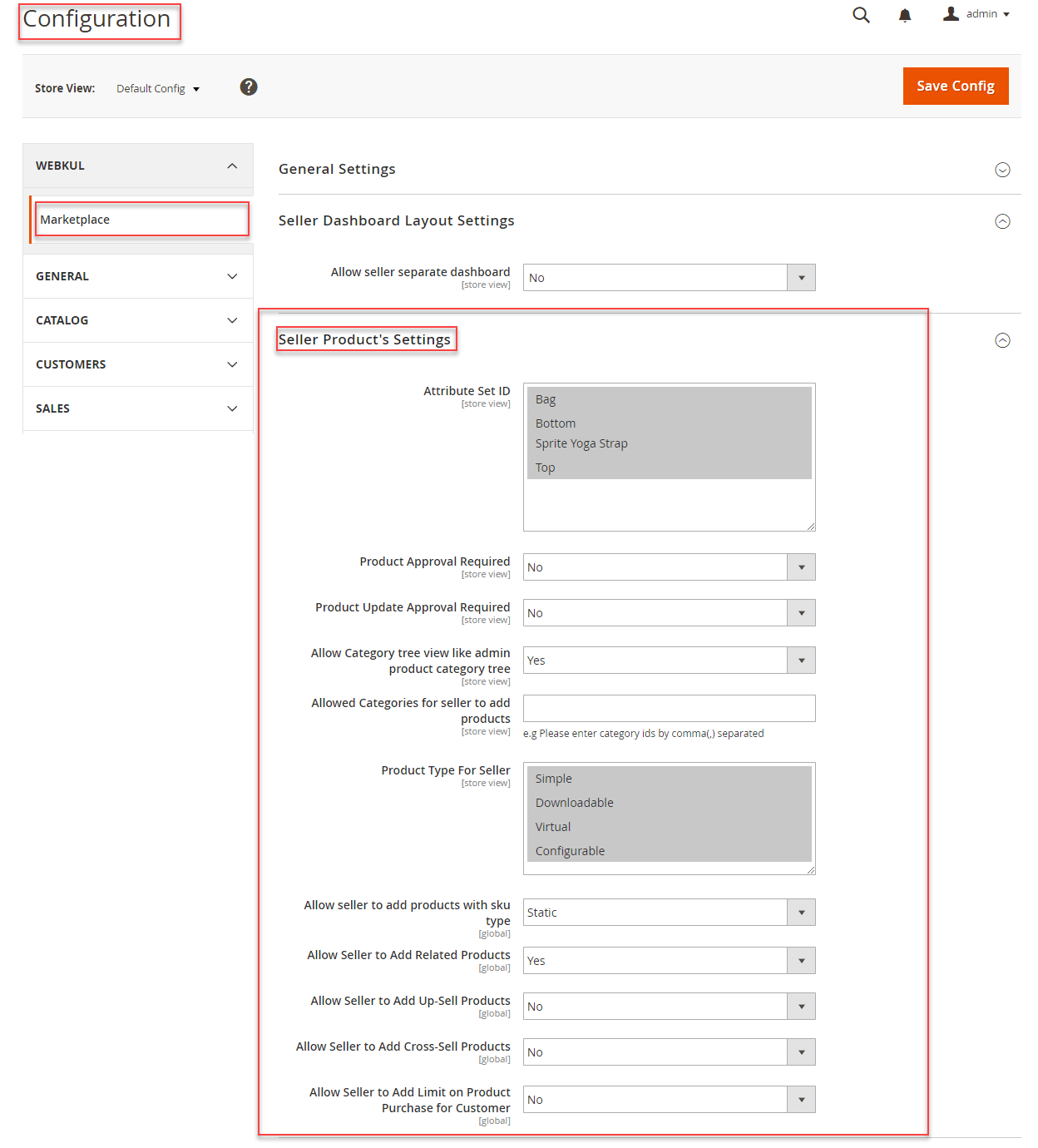
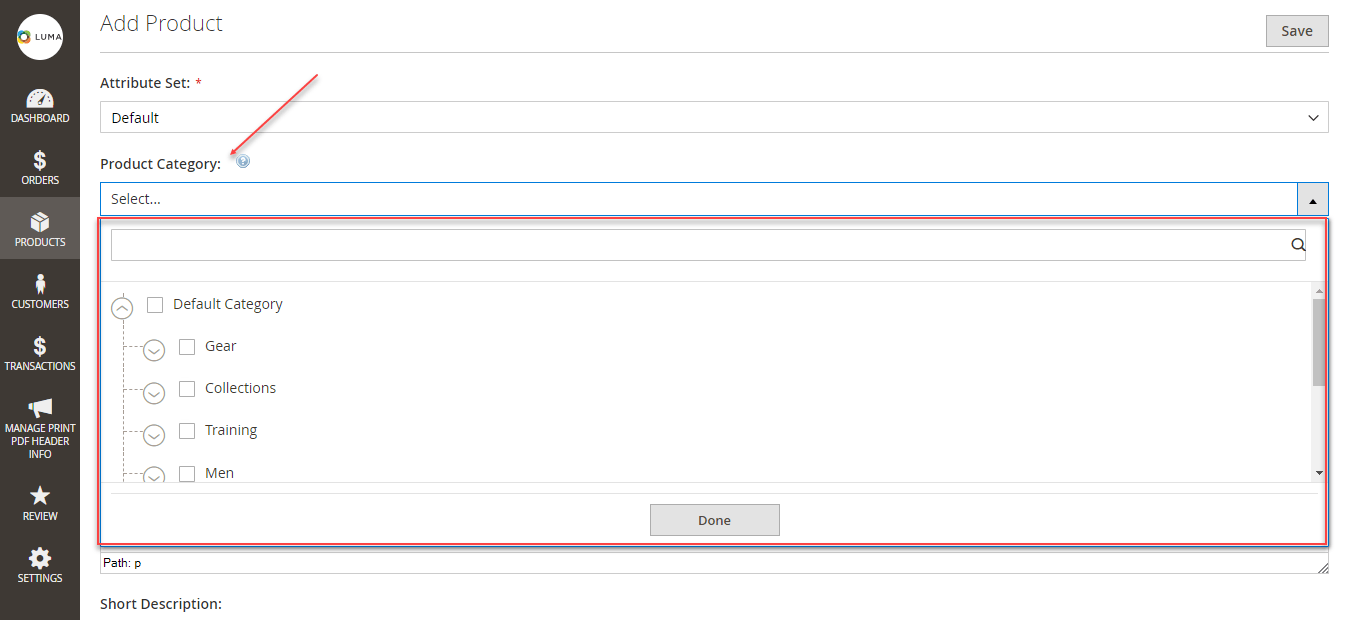












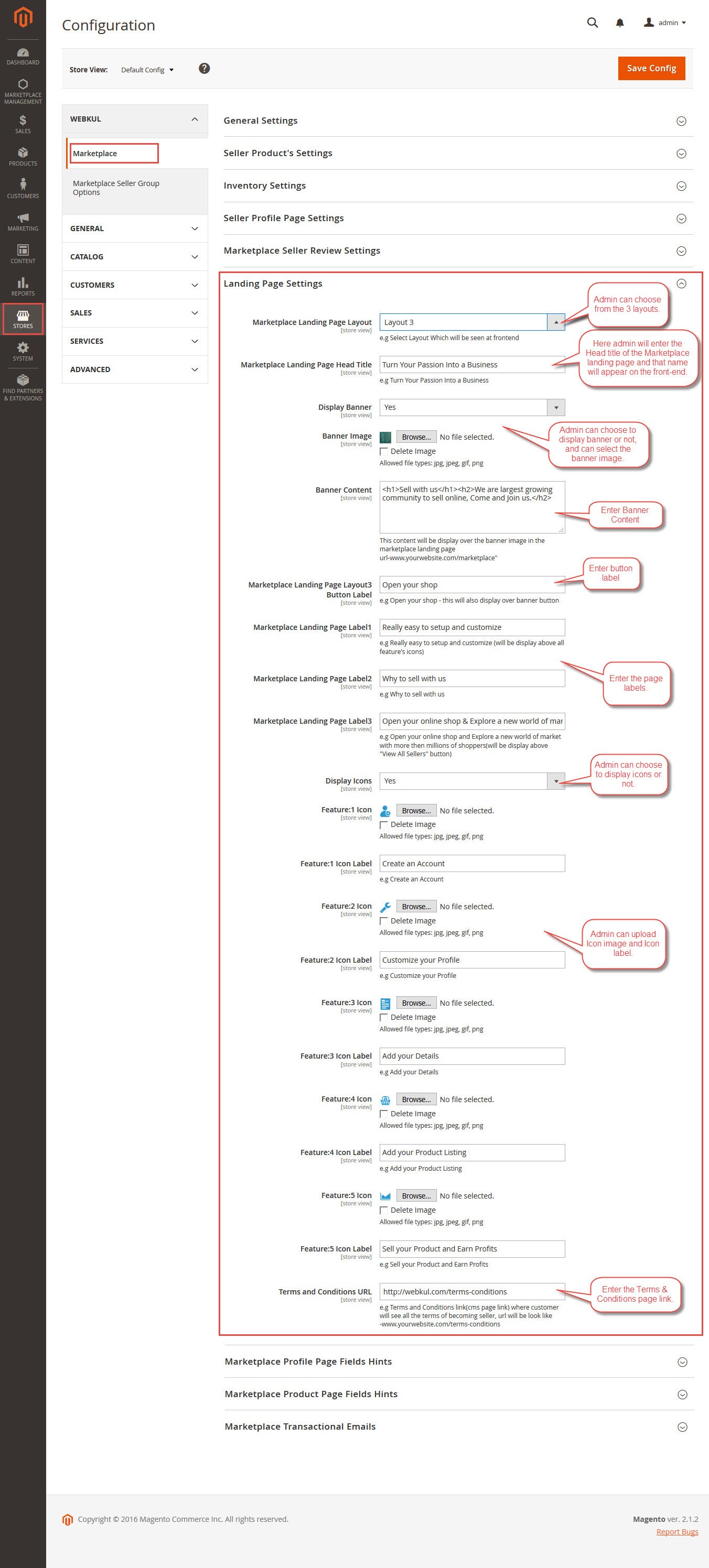



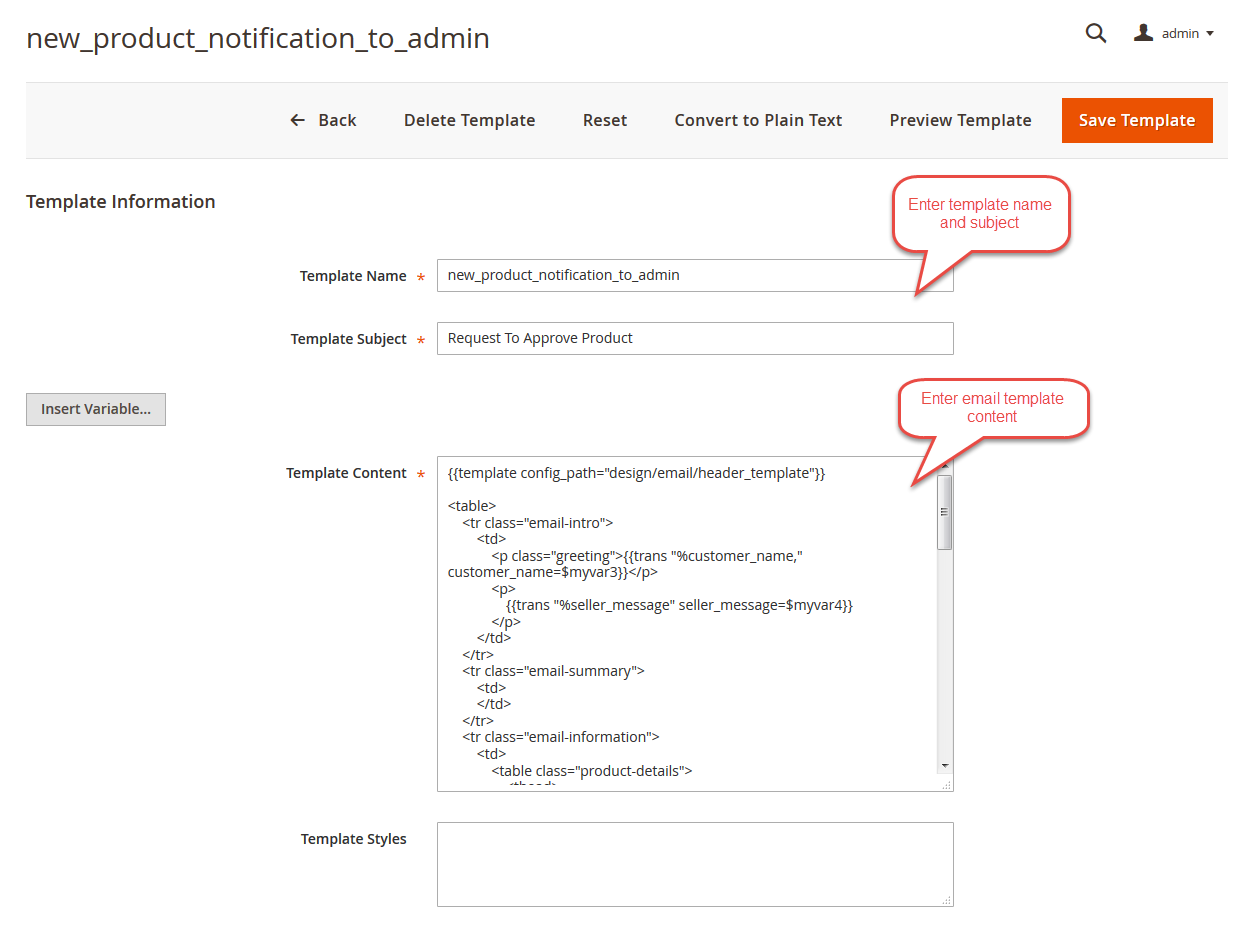







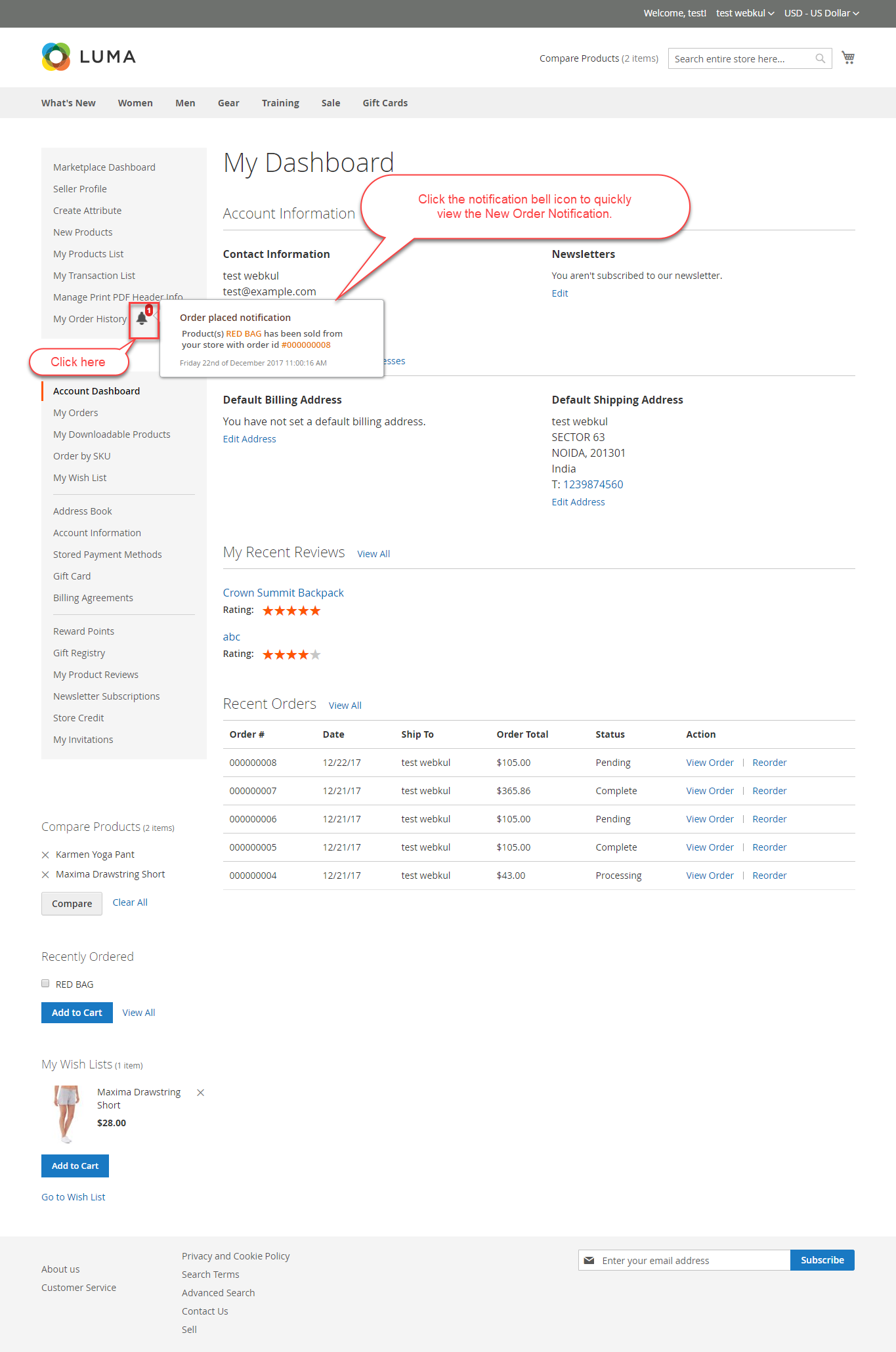








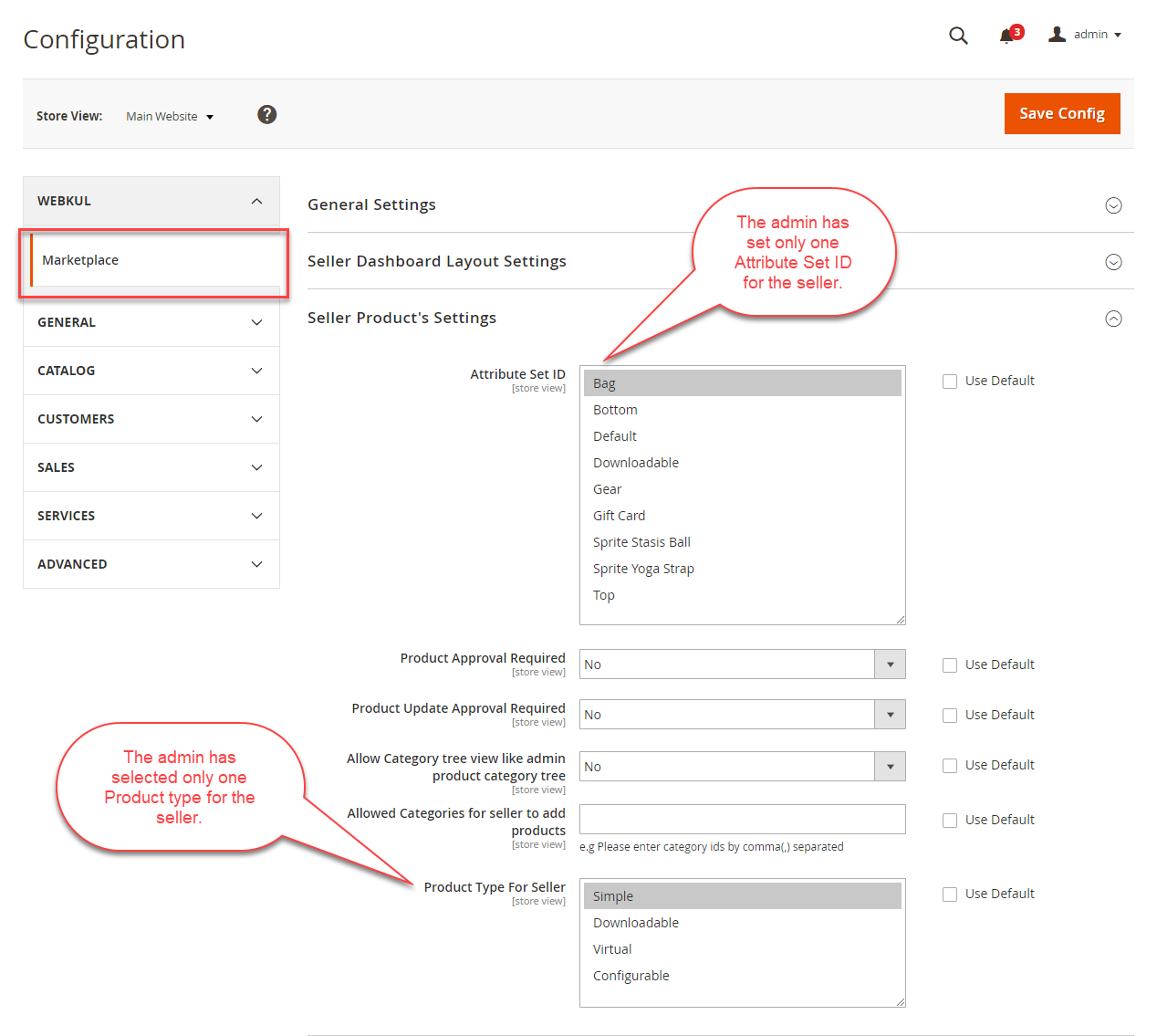



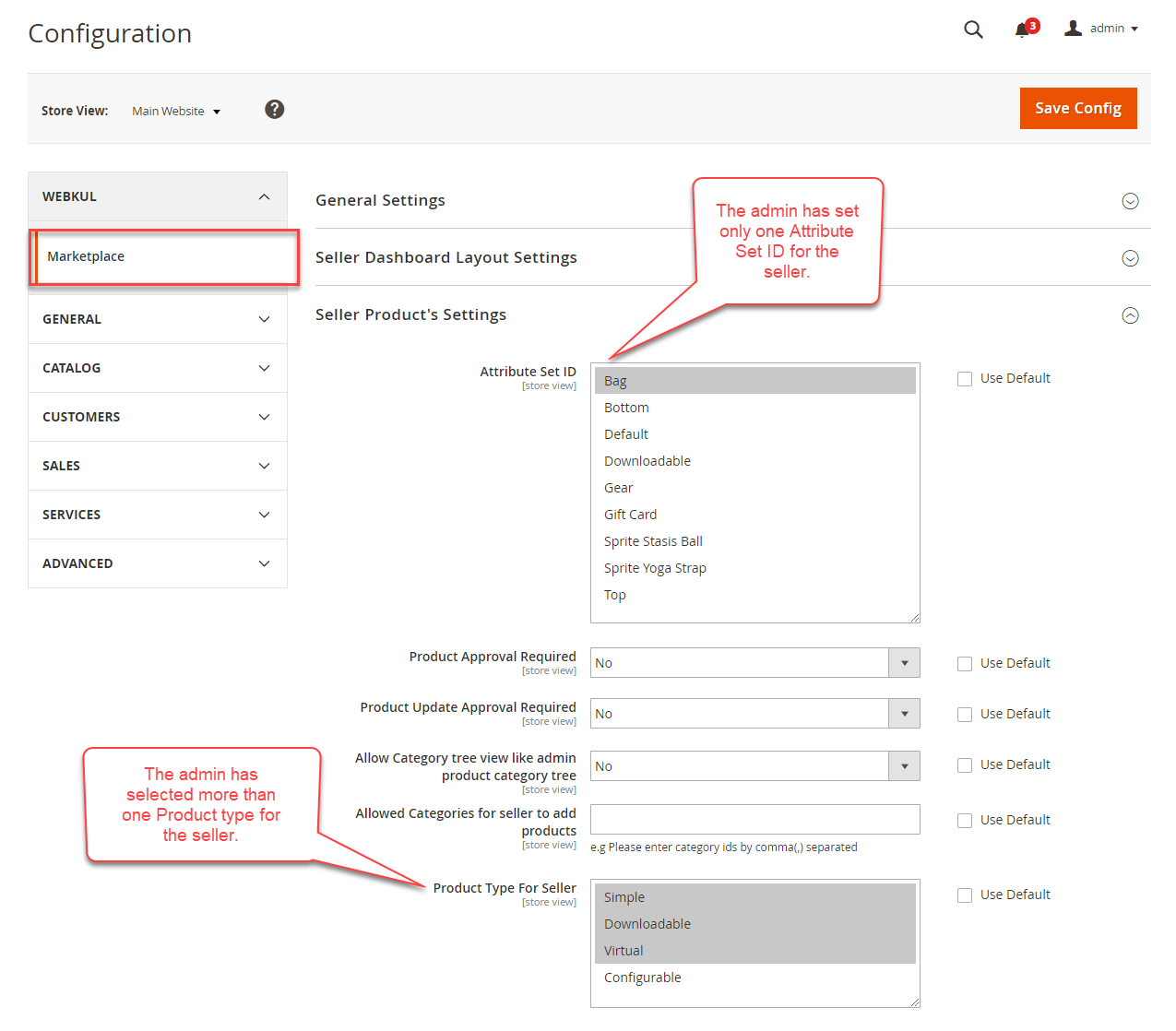





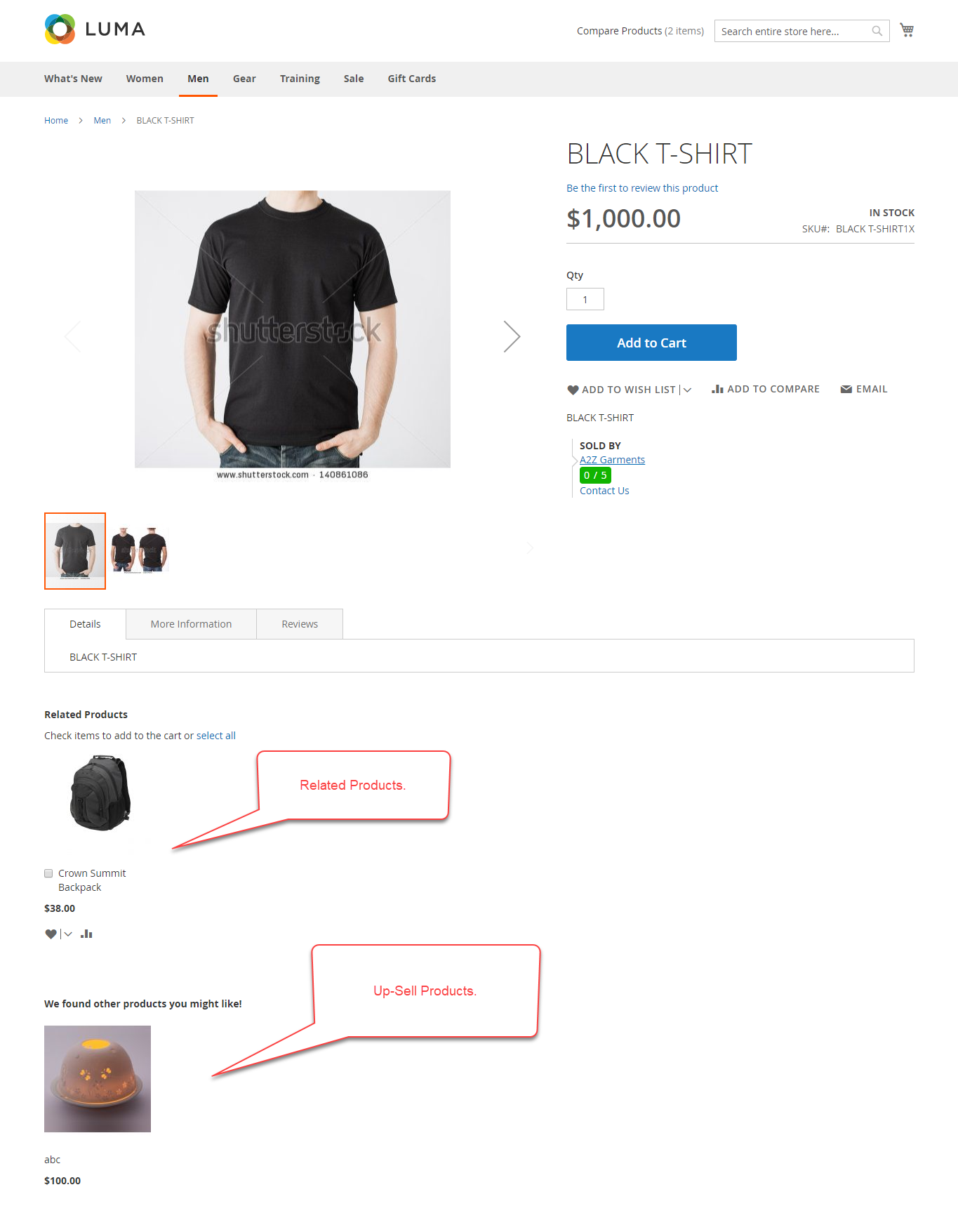










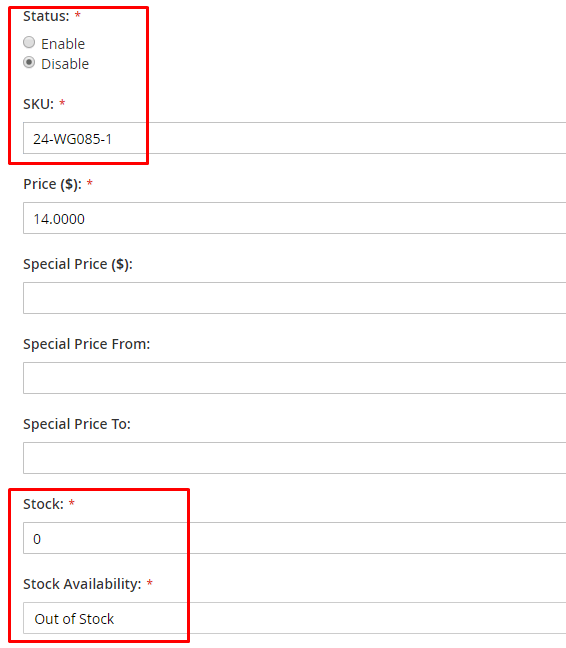






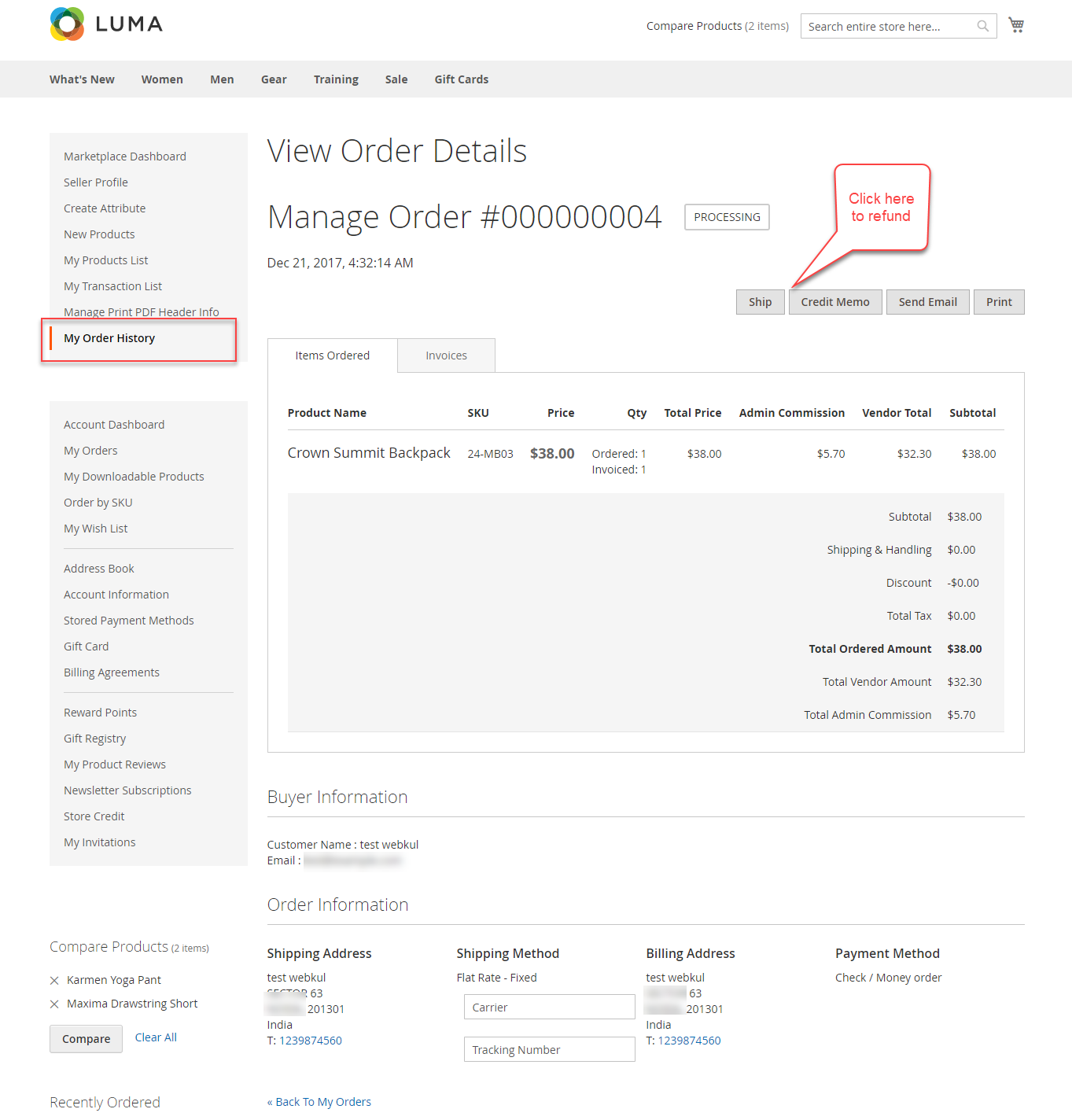





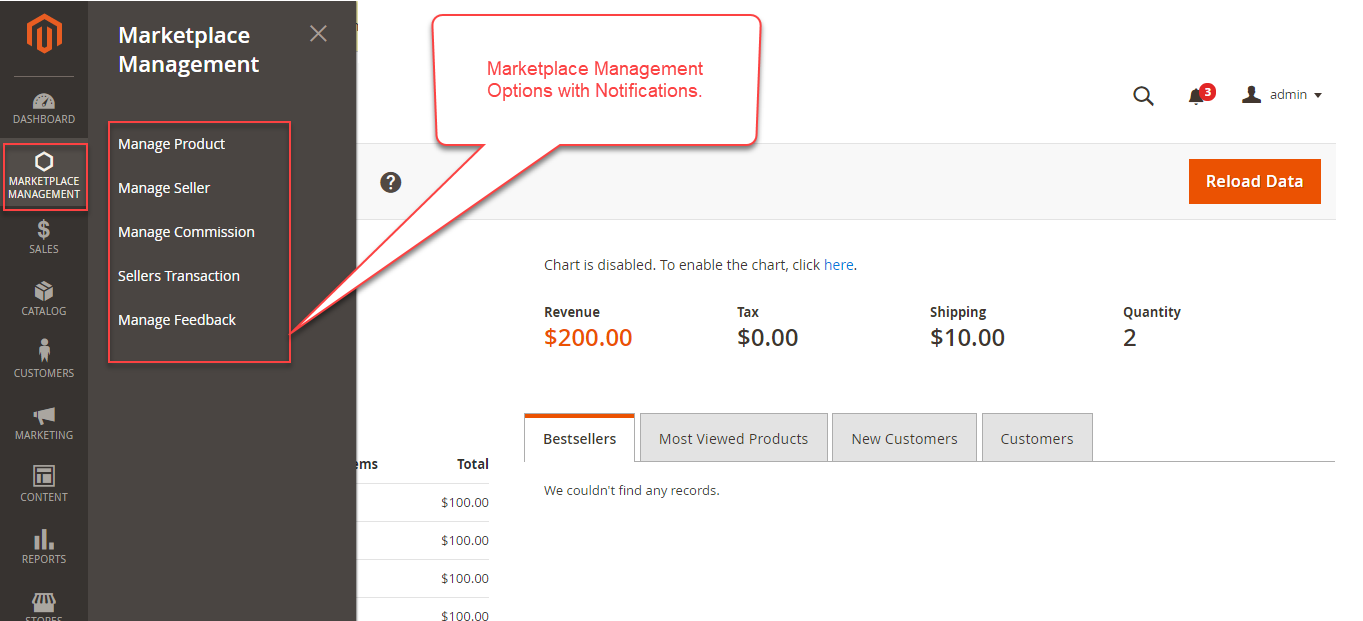
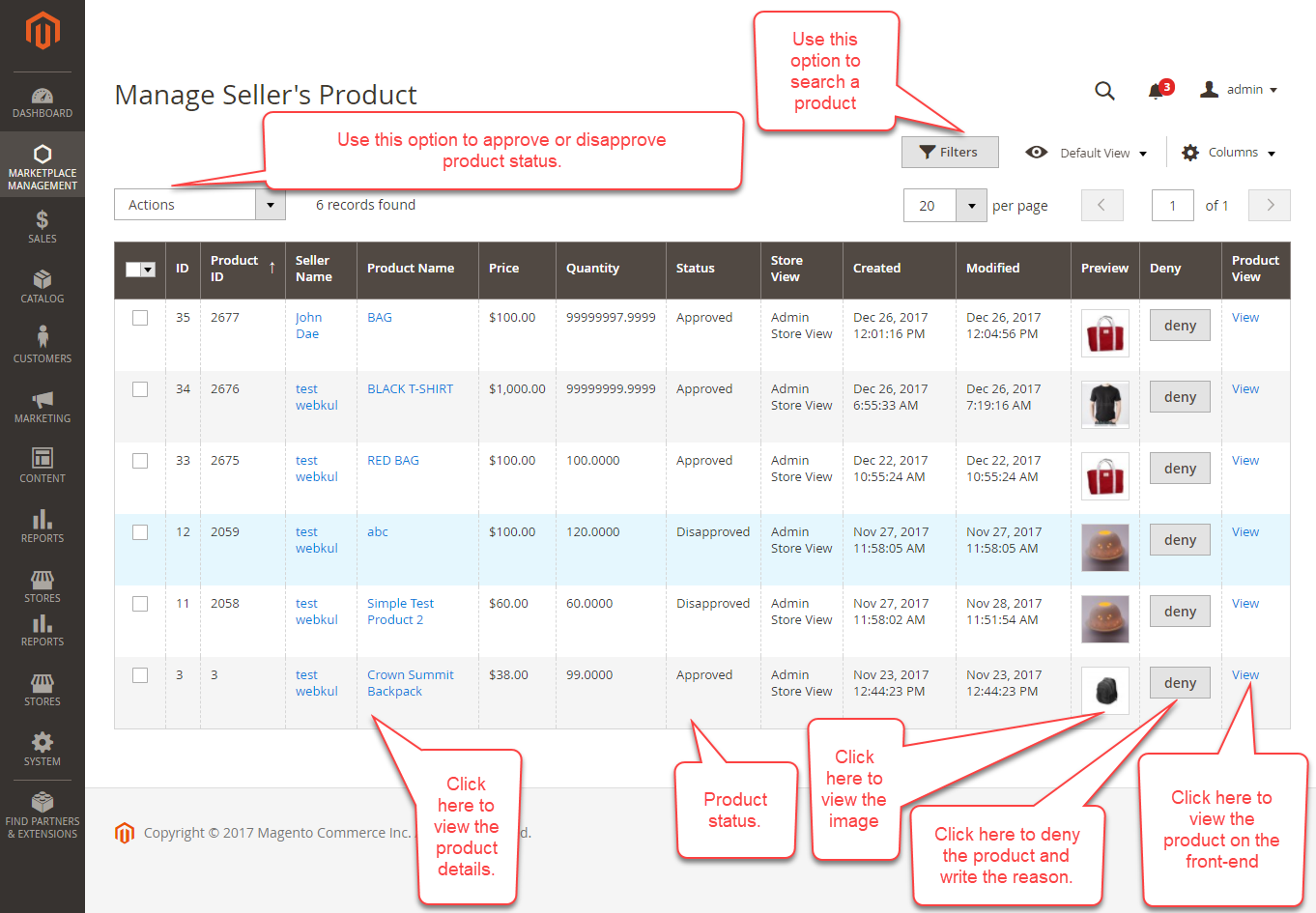
























Be the first to comment.